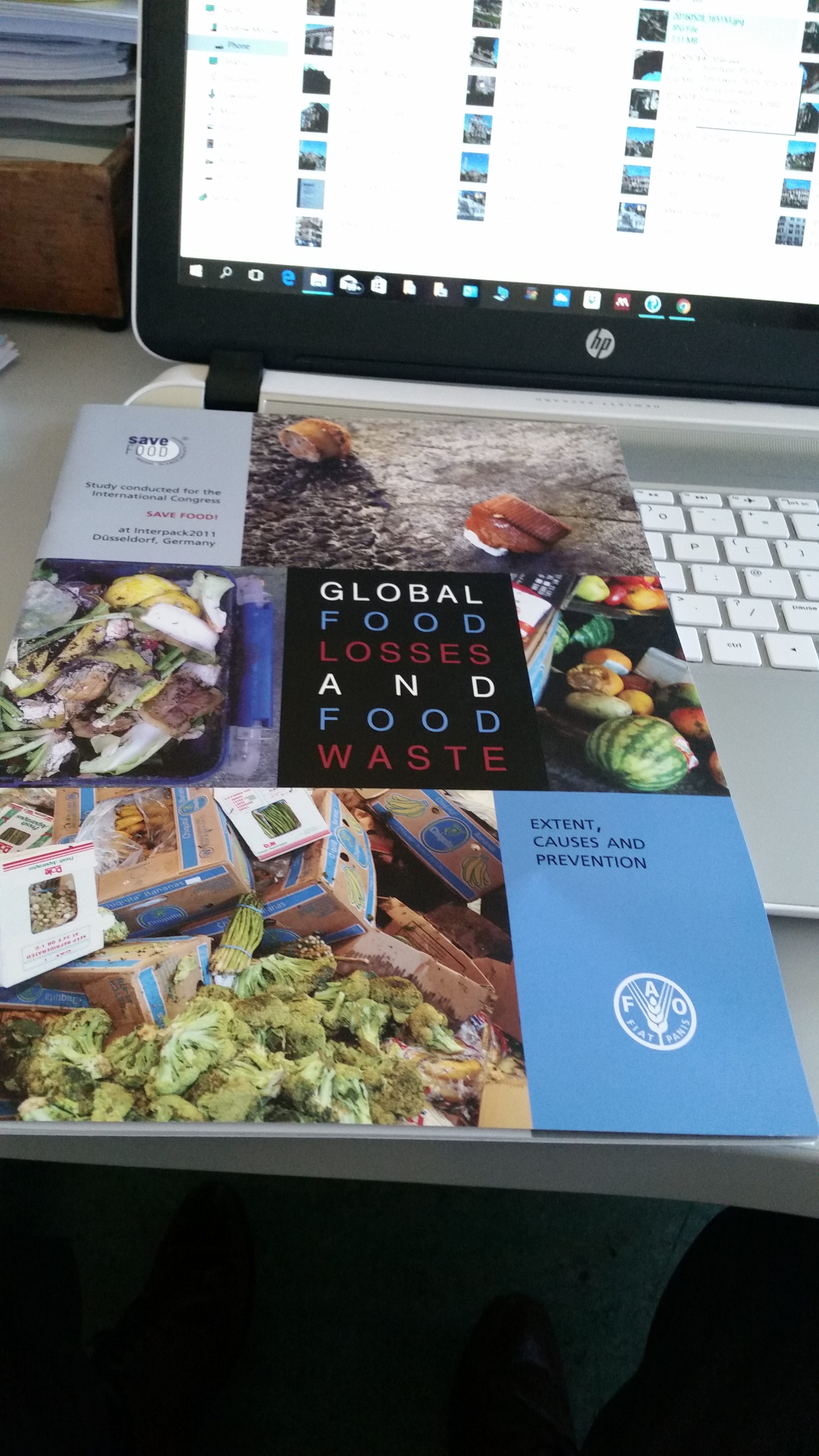
Gustavsson et al. (2011)-A must read for anybody interested in the topic!
As my literature review gradually winds down I find myself in the position of being able to recommend some key articles to anybody who wishes to learn more about the topic.
- FAO , 2014. Definitional Framework on Food Loss (working paper). Food and Agriculture Organization of the United Nations, Rome, Italy
Anybody interested in the topic should start by looking at this paper. A plethora of definitions of food loss and waste exist in the literature so any potential students/researchers have got to be careful. This useful article is a one stop shop. It provides useful terms, straight forward definitions and it even outlines the scope of FAO’s work on the topic. Highly recommended.
2. Gustavsson, J., Cederberg, C., Sonesson, U., Van Otterdijk, R. and Meybeck, A., 2011. Global food losses and food waste. Food and Agriculture Organization of the United Nations, Rome, Italy.
Quite simply, if you are writing or even considering writing anything about FLW you MUST consult this paper. It represents the most comprehensive attempt to quantify global FLW. Although not perfect (the authors admit this) this paper is a milestone and has been cited 849 times according to Google Scholar (correct at time of publishing). The statistics are flawed as gaps in the data meant that assumptions had to be made. It also provides a useful review of methods to reduce FLW. A great all rounder.
3. FAO, 2013. “Impacts on Natural Resources—Summary Report.” Food and Agriculture Organization of the United Nations: Rome, Italy
There’s a bit of a trend emerging with this list. Another great report from FAO. This time they attempt to quantify the footprint of FLW. Drawing on the statistics found in Gustavsson et al. (2011), this paper attempts to quantify the environmental impact of FLW in terms of carbon footprint, water footprint, land use and biodiversity loss. For good measure it also analyses the issue from an economic view. While drawing upon imperfect statistics it nonetheless provides a useful insight into the impact that FLW has.
4. Lipinski, B., Hanson, C., Lomax, J., Kitinoja, L., Waite, R., & Searchinger, T. (2013). Reducing food loss and waste. World Resources Institute Working Paper, June.
Another great all rounder. Again, it offers a crystal clear definition of losses and waste. It references data from Gustavsson et al. (2011) but displays it in engaging and eye catching graphs. Interestingly, the authors also express FLW in terms of kcal. although the stand-out feature of the paper is the review of technologies and interventions designed to reduce FLW. it describes each feature, outlines the strengths and limitations and documents a working example in a developing country. Especially useful for those interested in solutions to FLW.
5. Timmermans, A. J. M., et al. Food losses and waste in the context of sustainable food systems. No. 8. CFS Committee on World Food Security HLPE, 2014.
the language is not quite as accessible in this paper but nevertheless it provides a fascinating insight into the issue of FLW. like many other papers it offers reasons for the occurrence of FLW and ways in which FLW can be reduced. However, what makes this paper stand out is that the authors analyse the issue from a food chain perspective. They argue that each stage in the food supply chain can cause losses at subsequent stages and that causes of FLW occur at different scales-at micro, meso and macr levels. Well worth a read if you want a less conventional explanation of the issue.
